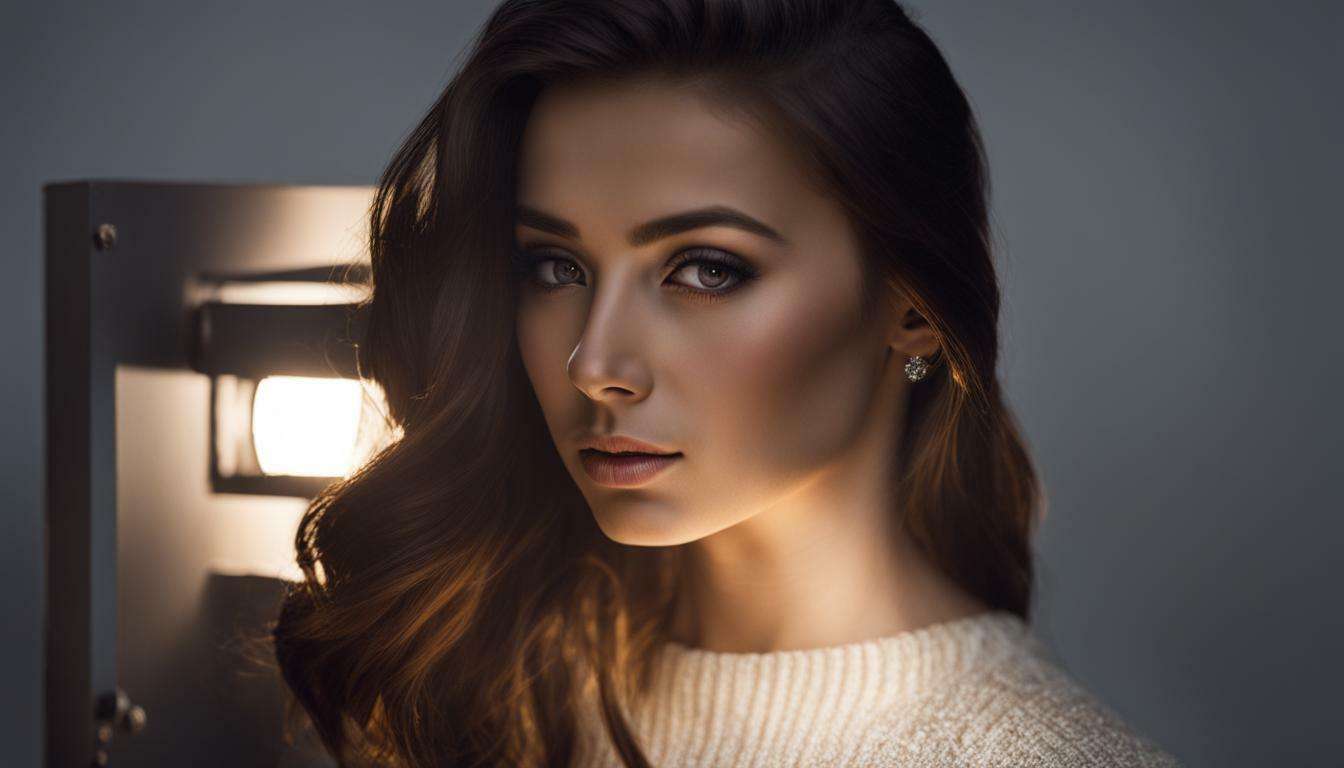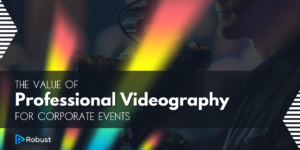Artificial lighting plays a crucial role in photography, allowing photographers to manipulate light and enhance the aesthetic quality of their shots. It refers to the light that is produced from human-made sources, such as electric lamps. This type of lighting is easily adjustable, making it a versatile tool for photographers to create the desired lighting effects and capture stunning images.
Key Takeaways
- Artificial lighting is essential in photography as it allows photographers to control and manipulate light to enhance their shots.
- There are various types of artificial light sources, including incandescent, fluorescent, and LED lamps, each with its own advantages in terms of energy consumption and lifespan.
- Photographers can use different lighting techniques, such as natural lighting tips, to achieve specific effects and desired outcomes in their photography.
- While artificial lighting offers advantages like extended working hours and the ability to customize color and brightness, it also has disadvantages, such as higher energy consumption and potential negative impacts on health.
- Photographers should carefully consider the use of artificial lighting and experiment with different techniques to achieve the best results for their specific photography needs.
Understanding Exposure and the Exposure Triangle
Achieving the correct exposure is essential in photography, and understanding the exposure triangle is the key to mastering this technique. The exposure triangle consists of three main elements: aperture, shutter speed, and ISO. These three factors work together to control the amount of light that enters the camera, resulting in a well-exposed image.
Aperture refers to the opening of the camera lens and determines the amount of light that reaches the sensor. A smaller aperture (represented by a higher f-number) restricts the amount of light, while a larger aperture (represented by a lower f-number) allows more light to pass through.
Shutter speed, on the other hand, refers to the length of time the camera’s sensor is exposed to light. A faster shutter speed freezes motion and reduces the amount of light, while a slower shutter speed captures more light and creates motion blur.
ISO, or sensitivity, controls how sensitive the camera sensor is to light. Lower ISO values produce cleaner and less noisy images, while higher ISO values allow for shooting in low-light conditions but may result in more digital noise.
By manipulating these three elements in the exposure triangle, photographers can achieve the desired exposure for their images. For example, if shooting in low-light conditions, increasing the ISO and widening the aperture can help capture more light. Conversely, for landscapes where everything needs to be in sharp focus, using a smaller aperture and a slower shutter speed may be necessary.
The Exposure Triangle Explained
Understanding how aperture, shutter speed, and ISO work together enables photographers to have full control over the exposure of their images. It allows for creativity in manipulating light and achieving the desired mood or effect.
Summary of the Exposure Triangle:
- Aperture: Controls the amount of light entering the camera through the lens opening.
- Shutter Speed: Determines the length of time the camera sensor is exposed to light.
- ISO: Controls the sensitivity of the camera sensor to light.
By understanding the relationship between these three elements and practicing with different settings, photographers can confidently capture well-exposed and visually appealing images in any lighting situation.
| Element of the Exposure Triangle | How it Affects the Exposure |
|---|---|
| Aperture | A larger aperture (lower f-number) allows more light to enter, resulting in a brighter exposure. A smaller aperture (higher f-number) restricts the amount of light, resulting in a darker exposure. |
| Shutter Speed | A faster shutter speed reduces the amount of time the sensor is exposed to light, resulting in a darker exposure. A slower shutter speed allows more time for light to reach the sensor, resulting in a brighter exposure. |
| ISO | A lower ISO produces a cleaner image but requires more light for proper exposure. A higher ISO increases the sensitivity of the sensor to light, allowing for better exposure in low-light conditions but potentially introducing more noise to the image. |
Types of Artificial Lighting Equipment and Their Uses
Choosing the right lighting equipment is crucial for achieving the desired lighting effects in photography, whether it’s a professional studio setup or a smaller portable lighting kit. There are various types of artificial lighting equipment available, each with its own unique features and uses.
Studio Lighting Setups
Studio lighting setups are commonly used in professional photography studios and provide precise control over lighting conditions. These setups typically consist of multiple light sources, modifiers, and accessories to create the desired lighting effects. Here are some commonly used types of studio lighting equipment:
- Strobes: Strobes are powerful artificial lights that produce a burst of bright light when triggered. They are commonly used for studio photography, providing high-intensity illumination for capturing sharp images with fast shutter speeds.
- Softboxes: Softboxes are light modifiers that create a soft and diffused light source. They are widely used in portrait photography to create flattering lighting and reduce harsh shadows. Softboxes come in various shapes and sizes to cater to different lighting needs.
- Reflectors: Reflectors are used to bounce and redirect light onto the subject. They come in different colors and surfaces, such as silver, gold, white, and black, allowing photographers to manipulate the light’s color temperature and intensity. Reflectors are versatile tools that can be used indoors or outdoors to enhance natural or artificial lighting.
Portable Lighting Kits
For photographers on the go or those who prefer a more lightweight setup, portable lighting kits offer convenience without compromising on lighting quality. These kits are compact and easily transportable, making them ideal for outdoor shoots or location-based photography. Here are some popular types of portable lighting equipment:
- Speedlights: Speedlights, also known as on-camera flashes, are compact flash units that can be mounted on the camera or used off-camera. They provide a quick and convenient solution for adding additional light to a scene. Speedlights are versatile and can be used for various photography genres, ranging from event photography to creative lighting techniques.
- LED Panels: LED panels are lightweight and energy-efficient lighting sources that provide consistent and adjustable lighting. They are popular among videographers and portrait photographers for their ability to produce continuous light. LED panels offer adjustable color temperature and intensity, allowing photographers to achieve the desired lighting balance and mood.
- Ring Lights: Ring lights are circular-shaped lights that provide even illumination around the subject. They are commonly used in portrait and beauty photography, as they create a unique catchlight in the subject’s eyes. Ring lights produce a soft, shadow-free light, enhancing facial features and reducing imperfections.
Choosing the right lighting equipment depends on the specific photography needs, available budget, and personal preferences. Whether it’s a professional studio setup or a smaller portable lighting kit, understanding the different types of artificial lighting equipment and their uses is essential for capturing stunning photographs with impressive lighting effects.
| Lighting Equipment | Features | Uses |
|---|---|---|
| Strobes | High-intensity illumination, fast trigger | Studio photography, high-speed captures |
| Softboxes | Soft and diffused lighting | Portrait photography, reducing harsh shadows |
| Reflectors | Bounce and redirect light, color manipulation | Enhancing natural light, studio or outdoor photography |
| Speedlights (On-camera flashes) | Compact, quick light source | Event photography, creative lighting techniques |
| LED Panels | Energy-efficient, adjustable light | Videography, portrait photography |
| Ring Lights | Even illumination, catchlight | Portrait, beauty photography |
Techniques for using artificial lighting in photography
Mastering different lighting techniques is essential for photographers looking to create stunning portraits and capture compelling images in low light situations. Whether you’re shooting in a studio or on location, understanding how to effectively use artificial lighting can make a significant difference in the outcome of your photographs.
1. Three-Point Lighting
One of the fundamental lighting techniques used in portrait photography is three-point lighting. This technique involves using three lights strategically placed around the subject to create depth, dimension, and highlight specific features. The key light is the primary light source that illuminates the subject, while the fill light helps to reduce shadows and balance the overall lighting. The backlight, also known as the hair light, adds separation between the subject and the background. By carefully adjusting the intensity and positioning of these lights, you can create a variety of effects and enhance the overall visual appeal of your portraits.
2. Low-Key Lighting
Low-key lighting is a popular technique for creating dramatic and moody images. This technique involves using a single light source or a combination of lights with reduced intensity to emphasize contrast and shadows. By selectively illuminating specific areas of the subject, you can create a sense of mystery and intrigue in your photographs. Low-key lighting is particularly effective for portraits, adding depth and creating a captivating visual impact.
3. Light Painting
Light painting is a creative technique that involves using artificial lighting to paint or draw shapes in the air during a long exposure. This technique allows you to add unique and imaginative elements to your photographs. By using tools like flashlights, LED lights, or even sparklers, you can create incredible light trails or write words in the frame. Experimenting with different light painting techniques can result in truly striking and visually stunning images.
| Lighting Technique | Purpose | Effect |
|---|---|---|
| Three-Point Lighting | Create depth and dimension in portraits | Highlight specific features and reduce shadows |
| Low-Key Lighting | Produce dramatic and moody images | Emphasize contrast and shadows |
| Light Painting | Add unique and creative elements | Create light trails or draw shapes in the frame |
Experimenting with different lighting techniques and continuously exploring new creative possibilities will help you develop your own unique style and elevate the quality of your photographs. Remember to always consider the desired mood and effect you want to achieve and adjust your lighting accordingly. With practice and a good understanding of lighting techniques for portraits and low light situations, you’ll be able to create stunning and captivating images that truly engage your viewers.
Pros and Cons of Artificial Lighting
While artificial lighting offers numerous advantages in photography, it’s important to consider both the benefits and drawbacks before incorporating it into your workflow. Artificial lighting allows photographers to have full control over the lighting conditions, regardless of the time of day or the availability of natural light. This flexibility is especially beneficial for commercial and studio photographers who need consistent lighting for their projects. Additionally, artificial lighting allows photographers to create specific moods and atmospheres by adjusting the intensity, color, and direction of the light.
Another advantage of artificial lighting is its ability to extend working hours. With artificial lights, photographers are not limited by daylight and can shoot anytime, even in low-light environments. This is particularly useful for event photographers who often work in dimly lit venues. Additionally, artificial lighting provides safety and security, especially in outdoor shoots conducted during nighttime.
However, artificial lighting also has its disadvantages. One of the main drawbacks is the higher energy consumption compared to natural lighting. Photography lighting setups often require multiple lights and equipment, leading to increased electricity usage. This not only impacts the environment but can also add up to higher production costs. Additionally, excessive exposure to artificial lighting can have adverse effects on health and well-being. Studies have shown that prolonged exposure to certain types of artificial lights, such as fluorescent lights, can cause eye strain, headaches, and sleep disturbances.
Despite these drawbacks, artificial lighting plays a crucial role in photography, especially in situations where natural light is limited or unavailable. By understanding the pros and cons of artificial lighting, photographers can make informed decisions and utilize techniques that best suit their creative vision and practical needs.
| Pros of Artificial Lighting | Cons of Artificial Lighting |
|---|---|
| Full control over lighting conditions | Higher energy consumption |
| Flexibility to create specific moods and atmospheres | Potential negative impacts on health and well-being |
| Ability to extend working hours | |
| Enhanced safety and security |
Conclusion
In conclusion, artificial lighting is a powerful tool for photographers to enhance their images and create stunning visual effects, requiring a solid understanding of exposure and the right equipment to achieve desired results. With the ability to manipulate the lighting conditions, photographers can control the mood, atmosphere, and overall impact of their photographs. By mastering the exposure triangle and experimenting with different lighting techniques, photographers can unleash their creative potential and capture images that stand out.
Understanding the various types of artificial lighting equipment available is essential for photographers. Studio lighting setups, for example, offer a controlled environment where photographers can shape the lighting to suit their specific needs. By selecting the right equipment for each photography genre, photographers can achieve professional-looking results and bring their vision to life.
While artificial lighting offers numerous advantages in terms of flexibility and control, it is important to consider the downsides as well. It is crucial to be mindful of energy consumption and explore energy-efficient lighting options to minimize the environmental impact. Additionally, excessive exposure to artificial light can have negative effects on health and well-being. Thus, it is important for photographers to strike a balance and prioritize both the desired visual outcome and the well-being of their subjects.
In architectural design, artificial lighting plays a vital role in creating visually appealing spaces. Different types of luminaires, such as recessed, suspension, and surface-mounted fixtures, can be strategically placed to provide direct or indirect lighting, highlighting architectural elements and creating a desired ambiance.
In conclusion, artificial lighting offers photographers a wide range of possibilities to capture stunning images. By understanding the technical aspects of exposure, investing in the right equipment, and considering the impact on health and the environment, photographers can harness the power of artificial lighting to elevate their work and create visually captivating photographs.
How Can Understanding Natural Light Help in the Use of Artificial Lighting?
Understanding variations in natural light is crucial when it comes to using artificial lighting effectively. By grasping the nuances of natural light throughout the day, we can adjust our artificial lighting to mimic the desired atmosphere. This knowledge enables us to create more comfortable, aesthetically pleasing, and energy-efficient indoor environments.
How Can Light Modifiers Improve the Use of Artificial Lighting?
Controlling and enhancing lighting with light modifiers is key to improving the use of artificial lighting. These accessories, such as reflectors, diffusers, and grids, allow photographers and videographers to shape and direct light to achieve the desired effect. Light modifiers help soften harsh shadows, reduce glare, add depth, and create mood, resulting in more professional and visually pleasing images. By manipulating light with these tools, one can transform ordinary artificial lighting into a versatile and captivating medium.
FAQ
What is artificial lighting?
Artificial lighting refers to the light that is produced from human-made sources such as electric lamps.
What are the different types of artificial light sources?
The different types of artificial light sources include incandescent, fluorescent, and LED lamps.
What are the advantages of artificial lighting?
Artificial lighting extends working hours, provides safety at night, and allows for customization in terms of color, intensity, and brightness.
What are the disadvantages of artificial lighting?
Artificial lighting has higher energy consumption and potential negative impacts on health and well-being.
Where is artificial lighting commonly used?
Artificial lighting is commonly used in homes, offices, and other spaces where natural light is limited or unavailable.
What are the different purposes that artificial lighting serves?
Artificial lighting serves different purposes, including ambient lighting for overall illumination, task lighting for specific activities, and accent lighting to highlight certain features.
What types of luminaires can be used for artificial lighting?
Various types of luminaires can be used for artificial lighting, such as recessed, suspension, and surface-mounted fixtures.






